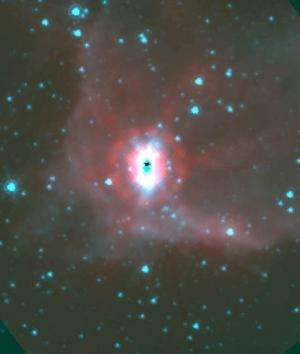Making massive stars

How do massive stars form? Stars with more than about eight times as much mass as the sun are arguably the most important actors in the universe. Although they live only hundreds of millions of years, they are much hotter and more luminous than the sun, and during their brief lifetimes their nuclear furnaces produce a wide range of chemical elements (the universe was created with primarily hydrogen and helium). In their dramatic deaths as supernovae they disburse these elements into the cosmos. They also can leave behind neutron stars or black holes.
The best understood models of star formation work well with lower mass stars like those the size of the sun -- their birth and maturation are comparatively slow and measured processes, and moreover the various stages can be observed with modern telescopes. By contrast, the physical processes associated with massive star birth are more extreme. A young massive star is so bright, for example, that outward pressure from its radiation retards the accretion of matter; in a smaller star that accretion causes it to continue to grow in mass as it matures. Moreover, massive stars mature very quickly (in less than a few hundred thousand years compared with millions of years for stars like the sun). As a result, there are not many young massive ones around at any given time in which to study the processes associated with their birth.
CfA astronomers Katharine Johnston, Eric Keto, Tom Robitaille, and a colleague, decided to apply their best models of low mass star formation to the case of a massive young star located about 5500 light-years away in the constellation of Cygnus. They wanted to test whether recent infrared and submillimeter observations of the dust around the source (and in its immediate surroundings) could perhaps exclude models of star formation used in low mass cases. Writing in the latest issue of Monthly Notices of the Royal Astronomical Society, the scientists report that, to the contrary, the low-mass models work tolerably well. The team is able to determine the mass of the star (about 12 solar-masses) and the accretion rate of material onto the star (about 130 Earth-masses per year). They also find that the star is surrounded by an envelope of about 600 solar-masses of gas and dust, and a large circumstellar disk of radius 9200 astronomical units. Their results indicate that at least the basic process of accretion and disk formation apply to the conditions around massive stars, even though maturation happens more quickly.
Provided by Harvard-Smithsonian Center for Astrophysics





















